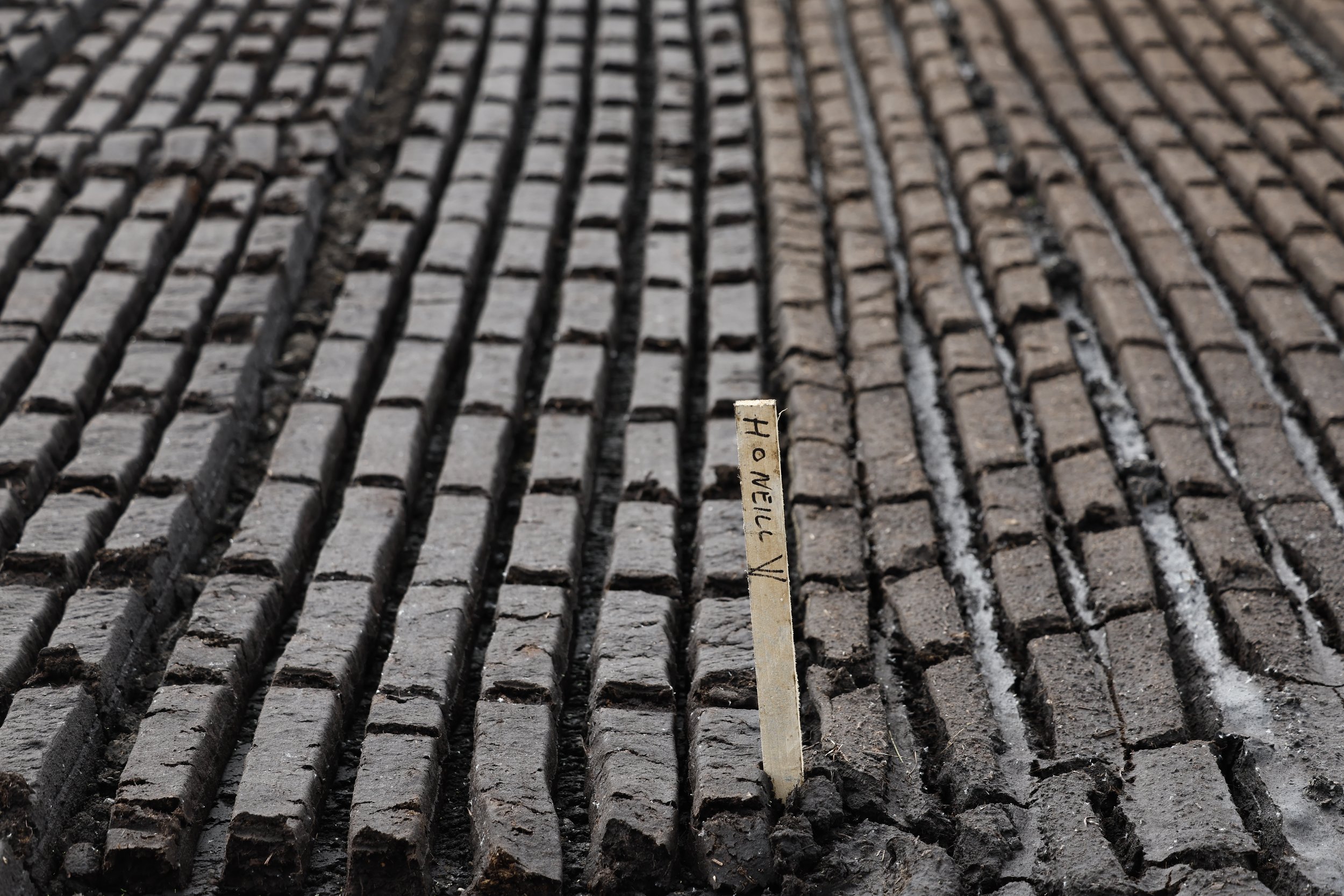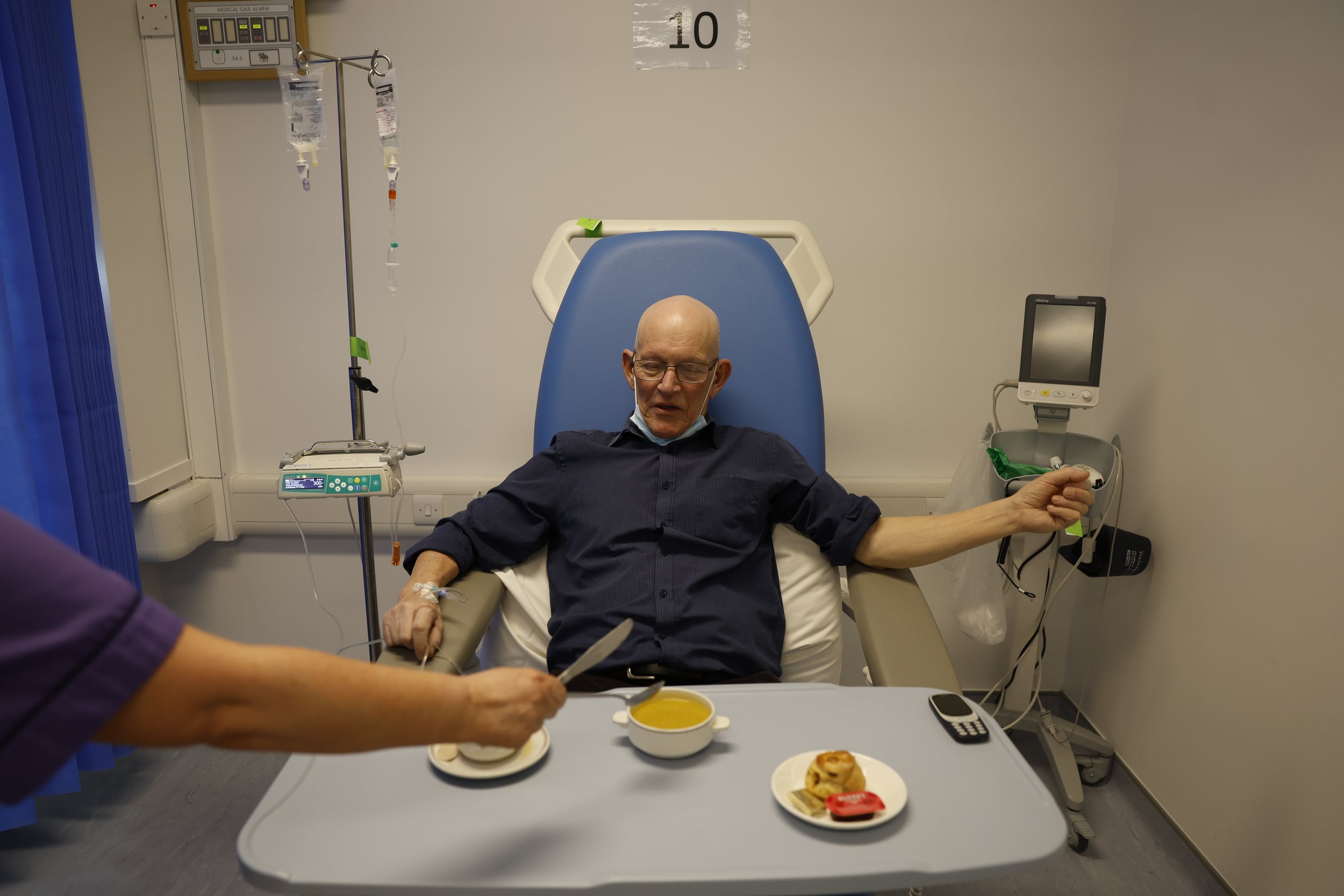
Ireland's peat harvesters dig in as green efforts flounder
As wind turbines hum steadily in the neighbouring field, two elderly men lift carefully stack sods of turf from an Irish Midlands bog to a waiting trailer, harvesting the cheap, smoky fuel their families have burnt for generations.
The hard, physical work is fiercely defended across rural Ireland as a cherished tradition that gives many homes and pubs their unique peaty odour and saves thousands of families from fuel poverty.
But pressure is growing on the government to do more to curb a practice that has destroyed swathes of the country's most unique habitats, leaving degraded bogs that are one of the country's largest sources of planet-warming carbon dioxide.
As the European Union takes legal action to force Dublin to better enforce the law, the issue has been seized on by local politicians as a symbol of a green agenda designed by and for wealthy urbanites.
"The people that are coming up with plans to stop people from buying turf or from burning turf... They don't know what it's like to live in rural Ireland," said John Smyth, a self-described "dinosaur" who has been cutting turf for half a century.
"That's what we are. Dinosaurs. Tormenting them."
Cutters see turf as the working man's fuel, used by the kind of people who can't afford what Smyth describes as "extravagant" fuels like gas or electricity, whose price has soared in recent years.
“The people that are coming up with plans to stop people from buying turf or from burning turf... They don’t know what it’s like to live in rural Ireland.”
Many who own a plot of bog say a stack of turf from a single harvest can heat their home for a year for under 1,000 euros without the stress of energy bills.
Those who want to ban turf are trying to destroy rural Ireland, says Smyth, echoing a line favourite line used by local politicians across the political spectrum.
"The turf is beginning to wane off a bit," he said. "There's a new generation coming up now ...They don't want to go to the bog. I don't blame them."

THE DAMAGE DONE
Over thousands of years, decaying plants in wetland areas formed the bogs, creating unique ecosystems and massive natural carbon sinks. But in a country with little forest cover and no coal, traditional hand cutting and drying of peat became an important source of fuel.
That gave way in the mid-20th century to industrial-scale harvesting by the energy-poor Irish state, devastating much of the country's bogs and leaving many as barren brown wastelands.
The tide turned in the 1990s when 50 raised bog sites were designated as special areas of conservation. Since then industrial turf-harvesting by semi-state company Bord na Mona has been ended and the sale of peat for burning was banned in 2022.
THE DAMAGE DONE
Over thousands of years, decaying plants in wetland areas formed the bogs, creating unique ecosystems and massive natural carbon sinks. But in a country with little forest cover and no coal, traditional hand cutting and drying of peat became an important source of fuel.
That gave way in the mid-20th century to industrial-scale harvesting by the energy-poor Irish state, devastating much of the country's bogs and leaving many as barren brown wastelands.
The tide turned in the 1990s when 50 raised bog sites were designated as special areas of conservation. Since then industrial turf-harvesting by semi-state company Bord na Mona has been ended and the sale of peat for burning was banned in 2022.

PROGRESS
"I don't think there's been enough progress, no," said Pippa Hackett, a former Green Party junior minister for agriculture, who runs a farm not far from where Smyth lives in Clonbullogue and who points to the industrial harvesting of horticultural peat for export as a particular problem.
Her party, which championed efforts to curb cutting and restore bogs, has become demonized in many parts of rural Ireland. There is an agression driven by a hatred of the Green movement, which they see as their arch enemy, she said.
The party was devastated in an election last year, losing nine of 10 sets in parliament and was replaced as the third leg of the centre-right coalition government by a group of mainly rural independent members of parliament.
"I don't think it's likely that we'll see much action between now and the end of this decade,” Hackett said.

RESTORATION
The European Commission, which has listed a number of Irish bogs among the continent's most precious natural habitats, last year referred Ireland to the Court of Justice for failing to protect them against turf cutting and insufficient action to restore the sites.
The country also faces potentially billions of euros of fines if it misses 2030 carbon reduction targets. Degraded peatlands now emit 21.6 million tonnes of CO2 equivalent per year, according to 2022 UN report, almost double the country's transport emissions.
To help turn the tide, the government has tasked the semi-state bog harvesting company that did most of the damage - Bord na Mona - with trying to "rewet" the bogs to curb the carbon emissions and eventually turn them back into carbon sinks.

The Irish government says there has been a complete cessation of turf-cutting on almost 80% of the raised bog special areas of conservation since 2011 and a reduction of almost 40% on 2022 turf cutting levels in 2023 on raised bogs.
On many bogs, peat harvesters have been replaced by scientists who carefully monitor carbon emissions from boglands and mechanical digger operators who dig up large square pits in the most damaged bogs to be filled with water.

Bord na Mona is also integrating renewable energy on the lands, including wind and solar, and adding recreational amenities like tracks, trails and fishing lakes.
"In the longer term we will see more and more of those bogs you know switching back to sinks for carbon," said Doreen King, a project manager of the Peatlands Climate Action Scheme.
"But we have to be realistic that is going to take a long time."

























